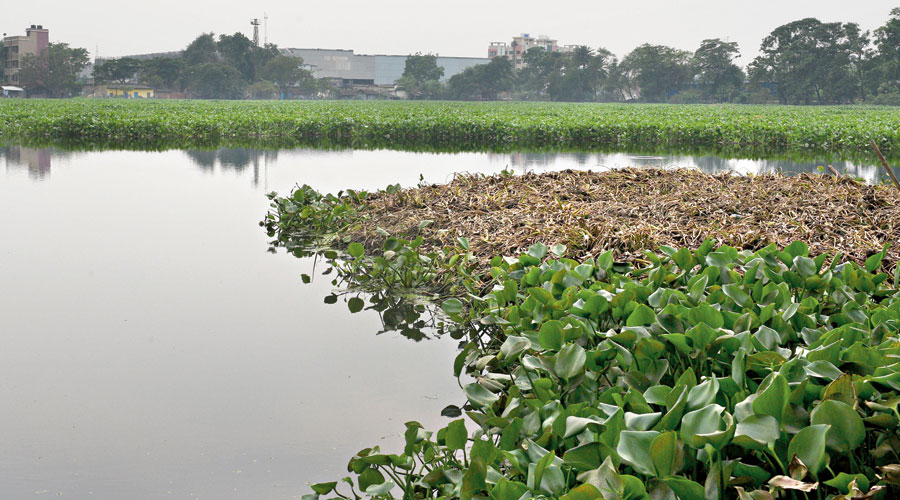The state government’s caring approach towards Santragachhi Jheel stands in contrast to its attitude towards Rabindra Sarobar, both of which are home to thousands of birds, resident as well as migratory.
The government has ensured that Santragachhi Jheel, in Howrah, is cleaned ahead of birds’ arrival this year, but has taken a different course for Rabindra Sarobar and moved the Supreme Court for permission to allow Chhath Puja there.
Environmentalists fear the Chhath rituals will scare away birds and affect the ecology of the water body and the surroundings.
Metro reported on Sunday that the Supreme Court had listed the Calcutta Metropolitan Development Authority’s plea for allowing Chhath at Rabindra Sarobar for hearing on Monday.
At Santragachhi Jheel, work to clear water hyacinths began in July. Eleven islands or platforms of hyacinths have been created for birds to roost.
Birdwatcher Sujan Chatterjee said the jheel was a resting place for birds that arrive during winter. Many of the birds live in forest habitats but migrate to warmer places in winter. They need a protective covering and the islands of water hyacinths provide that. “They roost on hyacinth islands. It is heartening to know that the islands have been built on time,” he said.
Arjan Basu Roy, who is building the islands of hyacinths, said the “vegetation management work began in July”.

One of the hyacinth islands built for migratory birds at Santragachhi Jheel. Pradip Sanyal
“We have cleared water hyacinths from a large part of the jheel. We have created 11 islands. Several Lesser Whistling Ducks have already arrived. Work will be completed by November 15,” said Basu Roy, the founder of NGO Nature Mates.
An official of the state environment department said a management plan for Santragachhi Jheel would soon be ready. “We are preparing a round-the-year plan for management of the jheel. The West Bengal Biodiversity Board will release the funds for management,” the official said.
Till 2018, no state government department would come forward to clear the hyacinths. On most occasions, private individuals raised funds to clear the hyacinths. Since last year, the Biodiversity Board has been financing the project.
The government, however, has taken a different approach towards Rabindra Sarobar. The CMDA’s appeal before the NGT -- which banned all pujas, picnics and social events on the 173-acre Sarobar premises -- to allow Chhath Puja at Rabindra Sarobar was not even heard before it was rejected in September.
“You should feel happy that we are not imposing any cost,” the tribunal had said while rejecting the CMDA’s petition. But the CMDA, a state government agency, has now approached the Supreme with an identical plea.
Sudip Ghosh, a regular at the Sarobar, said more than 100 bird species have been recorded at Sarobar since January. “Turtles have been sighted. There is a rich diversity of flora and fauna, and all in the heart of the city with human habitations around it,” said Ghosh.
“Why is the government so keen on organising Chhath Puja at Rabindra Sarobar? We are not against puja, we are only saying protect Rabindra Sarobar.”
Birdwatchers said that a large number of birds go missing from the Sarobar a few days after Chhath Puja every year. The oil from lamps and ghee used for the rituals spill onto the water and form a layer that prevents diffusion of oxygen into the water from the atmosphere. This affects aquatic lives that require oxygen.











